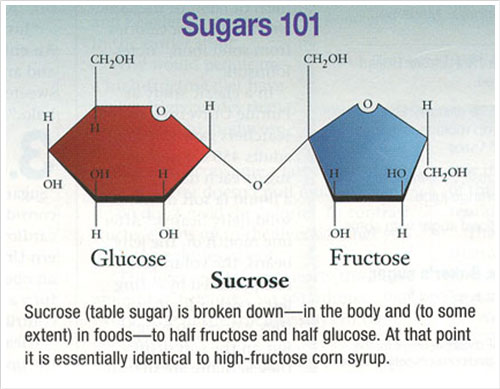
BUZZ THIS! - By Steve Green
S 510, the Food Safety Modernization Act of 2010, may be the most dangerous bill in the history of the US. It is to our food what the bailout was to our economy, only we can live without money.
“If accepted [S 510] would preclude the public’s right to grow, own, trade, transport, share, feed and eat each and every food that nature makes. It will become the most offensive authority against the cultivation, trade and consumption of food and agricultural products of one’s choice. It will be unconstitutional and contrary to natural law or, if you like, the will of God.” ~Dr. Shiv Chopra, Canada Health whistleblower
It is similar to what India faced with imposition of the salt tax during British rule, only S 510 extends control over all food in the US, violating the fundamental human right to food.
Monsanto says it has no interest in the bill and would not benefit from it, but Monsanto’s Michael Taylor who gave us rBGH and unregulated genetically modified (GM) organisms, appears to have designed it and is waiting as an appointed Food Czar to the FDA (a position unapproved by Congress) to administer the agency it would create — without judicial review — if it passes. S 510 would give Monsanto unlimited power over all US seed, food supplements, food and farming.
History
In the 1990s, Bill Clinton introduced HACCP (Hazardous Analysis Critical Control Points) purportedly to deal with contamination in the meat industry. Clinton’s HACCP delighted the offending corporate (World Trade Organization “WTO”) meat packers since it allowed them to inspect themselves, eliminated thousands of local food processors (with no history of contamination), and centralized meat into their control. Monsanto promoted HACCP.
In 2008, Hillary Clinton, urged a powerful centralized food safety agency as part of her campaign for president. Her advisor was Mark Penn, CEO of Burson Marsteller*, a giant PR firm representing Monsanto. Clinton lost, but Clinton friends such as Rosa DeLauro, whose husband’s firm lists Monsanto as a progressive client and globalization as an area of expertise, introduced early versions of S 510.
S 510 fails on moral, social, economic, political, constitutional, and human survival grounds.
1. It puts all US food and all US farms under Homeland Security and the Department of Defense, in the event of contamination or an ill-defined emergency. It resembles the Kissinger Plan.
2. It would end US sovereignty over its own food supply by insisting on compliance with the WTO, thus threatening national security. It would end the Uruguay Round Agreement Act of 1994, which put US sovereignty and US law under perfect protection. Instead, S 510 says:
COMPLIANCE WITH INTERNATIONAL AGREEMENTS.
Nothing in this Act (or an amendment made by this Act) shall be construed in a manner inconsistent with the agreement establishing the World Trade Organization or any other treaty or international agreement to which the United States is a party.
3. It would allow the government, under Maritime Law, to define the introduction of any food into commerce (even direct sales between individuals) as smuggling into “the United States.” Since under that law, the US is a corporate entity and not a location, “entry of food into the US” covers food produced anywhere within the land mass of this country and “entering into” it by virtue of being produced.
4. It imposes Codex Alimentarius on the US, a global system of control over food. It allows the United Nations (UN), World Health Organization (WHO), UN Food and Agriculture Organization (FAO), and the WTO to take control of every food on earth and remove access to natural food supplements. Its bizarre history and its expected impact in limiting access to adequate nutrition (while mandating GM food, GM animals, pesticides, hormones, irradiation of food, etc.) threatens all safe and organic food and health itself, since the world knows now it needs vitamins to survive, not just to treat illnesses.
5. It would remove the right to clean, store and thus own seed in the US, putting control of seeds in the hands of Monsanto and other multinationals, threatening US security. See Seeds – How to criminalize them, for more details.
6. It includes NAIS, an animal traceability program that threatens all small farmers and ranchers raising animals. The UN is participating through the WHO, FAO, WTO, and World Organisation for Animal Health (OIE) in allowing mass slaughter of even heritage breeds of animals and without proof of disease. Biodiversity in farm animals is being wiped out to substitute genetically engineered animals on which corporations hold patents. Animal diseases can be falsely declared. S 510 includes the Centers for Disease Control (CDC), despite its corrupt involvement in the H1N1 scandal, which is now said to have been concocted by the corporations.
7. It extends a failed and destructive HACCP to all food, thus threatening to do to all local food production and farming what HACCP did to meat production – put it in corporate hands and worsen food safety.
8. It deconstructs what is left of the American economy. It takes agriculture and food, which are the cornerstone of all economies, out of the hands of the citizenry, and puts them under the total control of multinational corporations influencing the UN, WHO, FAO and WTO, with HHS, and CDC, acting as agents, with Homeland Security as the enforcer. The chance to rebuild the economy based on farming, ranching, gardens, food production, natural health, and all the jobs, tools and connected occupations would be eliminated.
9. It would allow the government to mandate antibiotics, hormones, slaughterhouse waste, pesticides and GMOs. This would industrialize every farm in the US, eliminate local organic farming, greatly increase global warming from increased use of oil-based products and long-distance delivery of foods, and make food even more unsafe. The five items listed — the Five Pillars of Food Safety — are precisely the items in the food supply which are the primary source of its danger.
10. It uses food crimes as the entry into police state power and control. The bill postpones defining all the regulations to be imposed; postpones defining crimes to be punished, postpones defining penalties to be applied. It removes fundamental constitutional protections from all citizens in the country, making them subject to a corporate tribunal with unlimited power and penalties, and without judicial review. It is (similar to C-6 in Canada) the end of Rule of Law in the US.
For further information, watch these videos:
Food Laws – Forcing people to globalize
http://www.youtube.com/watch?v=Ia-P4rL2IWc
State Imposed Violence … to snatch resources of ordinary people
http://www.youtube.com/watch?v=onw_PkVvpts&feature=related
Corporate Rule
http://www.youtube.com/watch?v=6PwqUQ_HIlg&feature=related
Reclaiming Economies
http://www.youtube.com/watch?v=hXoJHG-er7A&feature=related
Oak snake image at Alfred B. Maclay Gardens State Park, Florida
http://snipurl.com/vrg6p
Source: S-510 is hissing in the grass - April 24, 2010
http://foodfreedom.wordpress.com/2010/04/24/s-510-is-hissing-in-the-grass/
Re-posted: TrueHealthIsTrueWealth
 People who have the highest intakes of vitamin K2, not vitamin K1, may significantly lower their risk of cancer and cancer mortality, according to results from the European Prospective Investigation into Cancer and Nutrition (EPIC) study.
People who have the highest intakes of vitamin K2, not vitamin K1, may significantly lower their risk of cancer and cancer mortality, according to results from the European Prospective Investigation into Cancer and Nutrition (EPIC) study.

